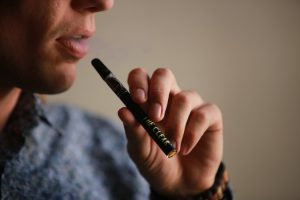
There has been a lot of talk about the possibility of vaping acting as a transmission vector for the SARS-CoV-2 virus, with some mainstream media outlets flat-out denouncing vaping as an imminent threat, but according to a recent scientific study, the risk of spreading infection while vaping is not more considerable than that of simple breathing.
Last month, an international team of researchers published a study titled “Aerial transmission of SARS-CoV-2 virus (and pathogens in general) through environmental e-cigarette aerosol“, which analyzes the risk of transmitting the novel coronavirus indoors via vaping, compared to breathing, speaking and coughing.
In order to assess the risk of SARS-CoV-2 transmission via e-cigarette aerosol exhalation, researchers – Roberto Sussman from Mexico, Eliana Golberstein from New Zealand, and Riccardo Polosa from Italy – identified the two main styles of vaping and their representation among the two world’s largest vaping communities (US and UK). By analyzing consumer survey data, the authors discovered that the overwhelming majority of vapers (80% in the United States and 90% in the UK) use low powered devices designed for MTL (mouth-to-lung) vaping, while the rest used advanced devices for Direct Lung Inhale (DLI) vaping.
DLI is described as a “high intensity regime associated with advanced tank systems,” where the e-cigarette aerosol (ECA) is inhaled directly into the lung without mouth retention. MTL, on the other hand, is a “low intensity regime involving low powered devices (mostly starting kits, closed systems and recent “pods”) roughly similar to the topography of cigarette smoking”.
There are a variety of individual usage patterns that could not be accounted for in this study, simply because every individual has a personal style that affects parameters like puff and inter puff duration, puff volume and flow. This made evaluating the aerosol emissions difficult for researchers, but being able to split e-cig users by the two vaping styles described above helped simplify the analysis.
“Vaping is an intermittent respiratory activity whose characteristic speeds, droplet diameters and emission rates are comparable to those of respiration and lower than those of talking, coughing or sneezing,” co-author Roberto Sussman of the National Autonomous University of Mexico said. “This implies that, in a shared indoor space, vaping only adds a miniscule additional contagion risk to the already existing risks of resting breathing and other respiratory activities.”
“Under normal vaping conditions (10-15 puffs per hour) the added risk of low intensity vaping respect to the control scenario of exclusive rest breathing is of the order of ∼ 1%,” the study authors write. For high intensity vaping, the risk of spreading pathogens grows to ∼ 5−17%, which may seem a lot higher, but is actually considerably lower than that of speaking (∼ 40% just for talking for 10% of the time and over 90% if talking 40% of the time).
“Coughing is also intermittent, possibly even more intermittent than vaping, but its large amount of exhaled droplets,” adding that the risk of pathogen spread is around 200% higher than the control of normal breathing.

Another thing that researchers took into consideration when conducting their risk analysis was the chemical composition of e-cigarette aerosol. While breathing, speaking and coughing can help spread “airborne” respiratory droplets, those released when vaping are not really airborne, but ECA-borne. Unfortunately the chemical interaction between the SARS-CoV-2 virus and propylene glycol, vegetable glycerin, nicotine and other e-liquid ingredients has never been studied, so there is no data to go on.
“It is very unlikely that its chemical medium could inhibit COVID-19 contagion by disabling or destroying the SARS-CoV-2 virus,” the study authors wrote. “Conversely, it is equally unlikely that this chemical medium could (somehow) enhance the probability of contagion in comparison with ‘normal’ airborne transmission.”
“The risk for direct and indirect COVID-19 contagion from indoor vaping expirations does exist and must be taken into consideration. However, this risk must be placed in its proper context with respect to the parameters of exposure that characterize vaping and other expiratory activities,” the study conclusion reads. “Vapers should be advised to be alert to the worries and fears of non-vapers when sharing indoor spaces or dwellings or when close to other citizens, and for safety measures to use low-powered devices for low intensity vaping. Vapers, however, deserve the same sensitivity, courtesy and tolerance as well.”
